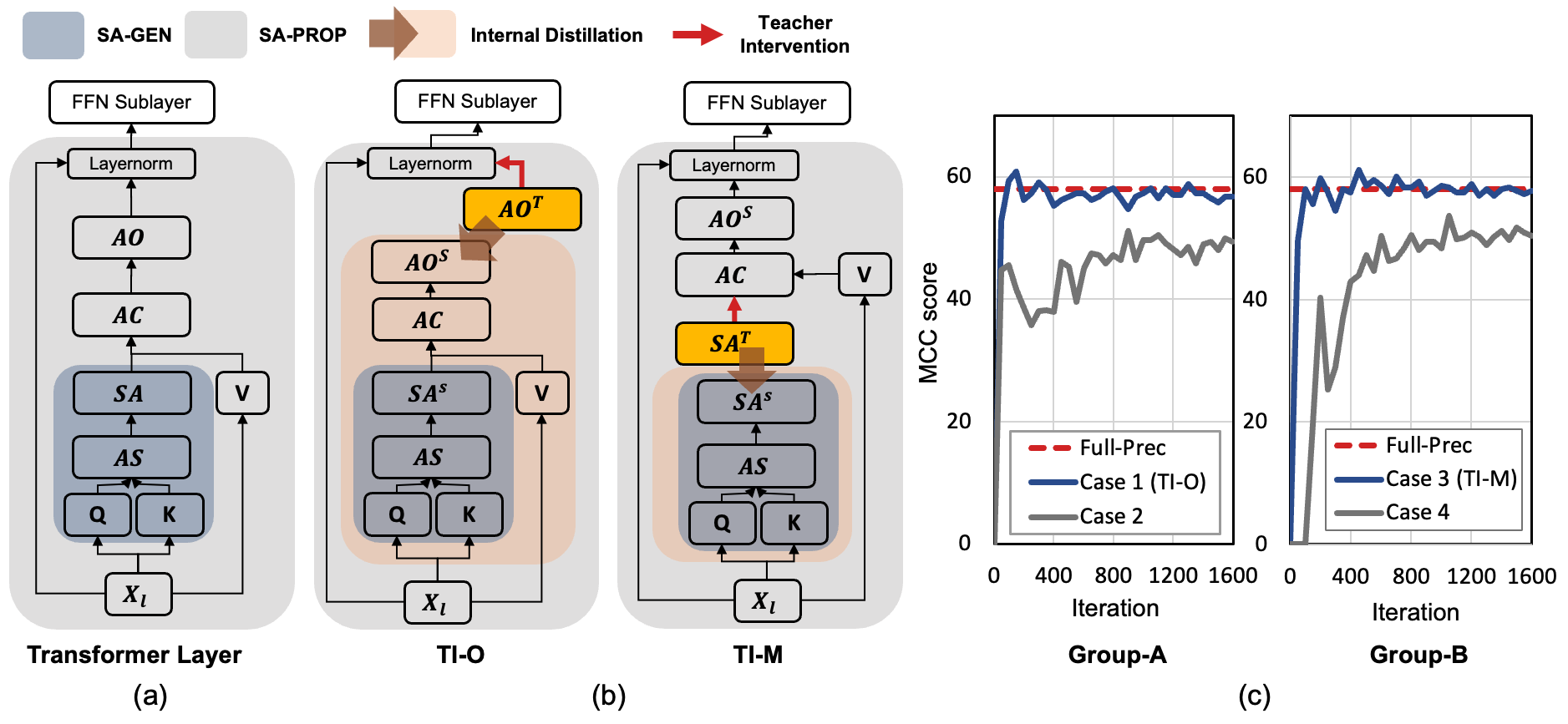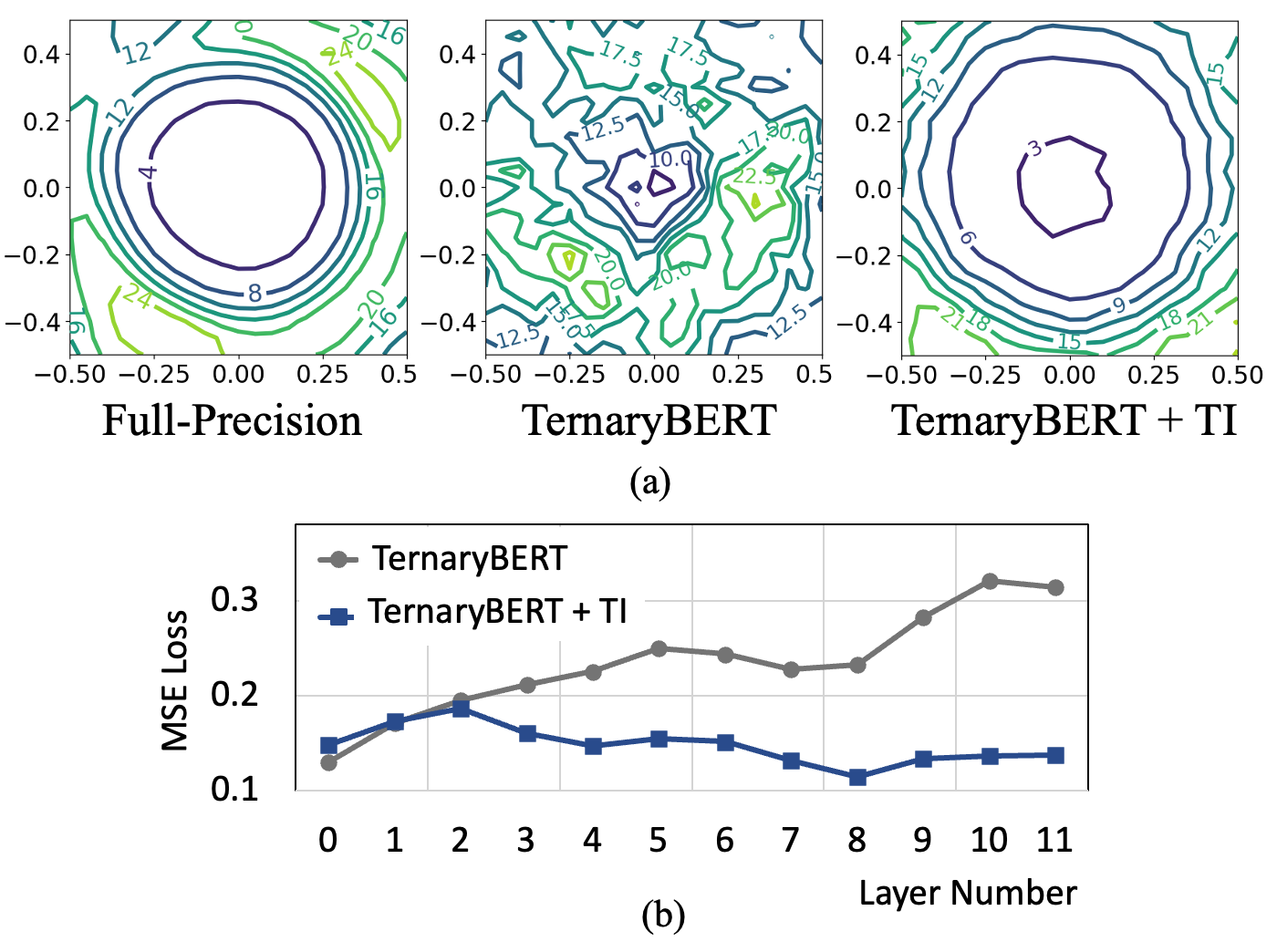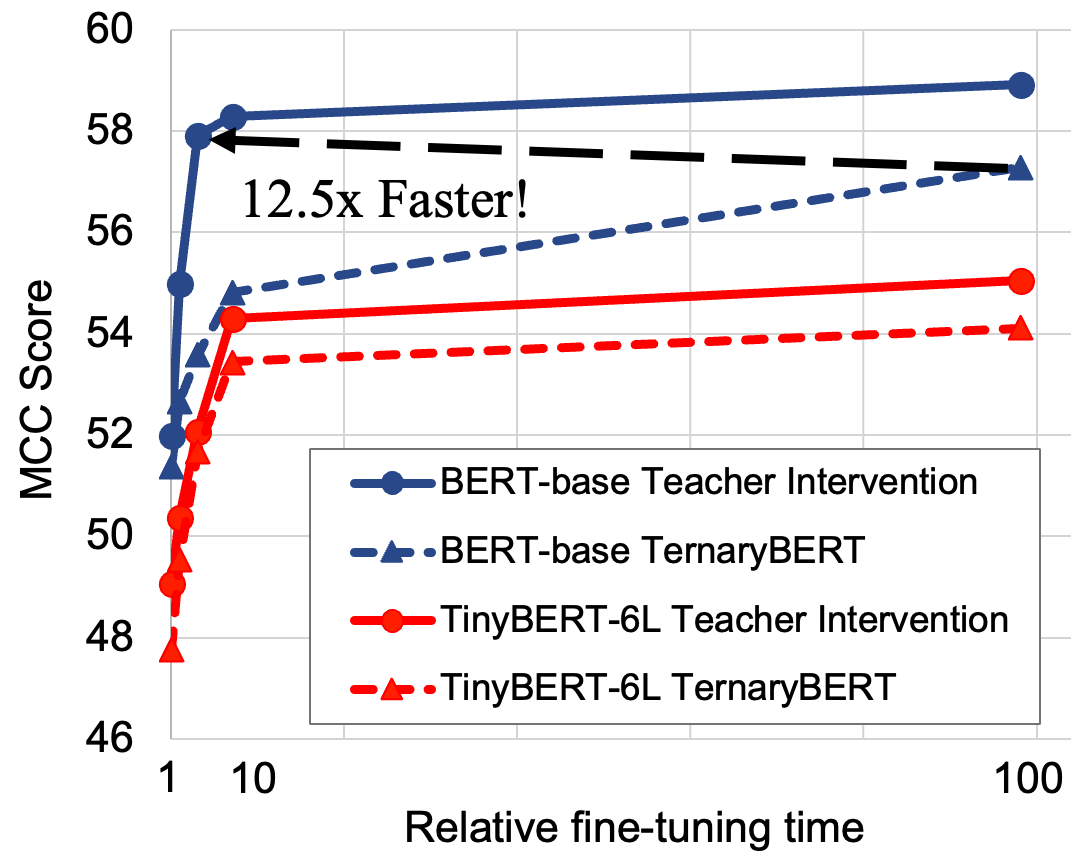Teacher Intervention: Improving Convergence of Quantization Aware Training for Ultra-Low Precision Transformers
This Repository provides a Pytorch implementation of Teacher Intervention: Improving Convergence of Quantization Aware Training for Ultra-Low Precision Transformers (EACL 2023 Main Track) Paper
- This work proposes a proactive knowledge distillation method (Figure 3-(b)) called Teacher Intervention (TI) for fast converging QAT (Figure 3-c) of ultra-low precision pre-trained Transformers.
- TI intervenes layer-wise signal propagation with the non-erroneous signal form the Full-Precision Teacher model (Figure 3-b) to remove the interference of propagated quantization errors, smoothing the loss surface of QAT and expediting the convergence. (Figure 2-a,b)
- Furthermore, we propose a gradual intervention mechanism to stabilize the recovery of subsections of Transformer layers from quantization. This unified intervention mechanism can manage diverse characteristics of fine-tuned Transformers for various downstream tasks. (Figure 4)
- We perform an extensive evaluation on various fine-tuned Transformers (BERT-base/large (Devlin et al., NAACL 2019), TinyBERT-4L/6L (Jiao et al., EMNLP 2020), and SkipBERT-6L (Wu et al., NeurIPS 2022) for NLP, and ViT (Dosovitskiy et al., ICLR 2020) for CV) and demonstrate that TI consistently achieves superior accuracy with lower fine-tuning iterations compared to the state-of-the-art QAT methods. (In particular, TI outperforms TernaryBERT (Zhang et al., EMNLP 2020) on GLUE tasks with 12.5x savings in fine-tuning hours. (Figure 1)
pip install -r requirements.txt
You can get GLUE task-specific fine-tuned BERT base model using hugging face code. https://github.com/huggingface/transformers/tree/master/examples/pytorch/text-classification
Download GLUE. https://github.com/nyu-mll/GLUE-baselines
The proposed TI method consists of Two Steps. (See Table-1 for detailed Two-Step TI QAT)
- Teacher Intervention is employed to finetune quantized weights of either FFN or SA-PROP sub-layers of Transformers. (Convergence in this step is very quick, as shown in Fig.3(c))
- Quantization is applied to the entire weights of Transformer layers for QAT
You can easily run TI two-step QAT pipeline using two bash scripts.
- In step-1, Turn-on TI options you want to try in the bash scripts. (e.g., for TI-G, set teacher_gradual=1)
- In step-2, Set
step1_optionargument same as step-1 training option. (e.g., for TI-G, step1_option=GRAD)
For QAT-step1 Set these args as follows in run_TI_step_1.sh bash script
# Single TI options (Experimental)
teacher_attnmap=0 # MI
teacher_context=0 # CI
teacher_output=0 # OI
# TI-G (Gradual Teacher Intervention) options
teacher_gradual=1 # GRAD
teacher_stochastic=0 # STOCHASTIC
teacher_inverted=0 # INVERTED
For QAT-step2 Set this arg as follows in run_TI_step_2.sh bash script.
step1_option=GRAD # {MI, CI, OI, GRAD, INVERTED, STOCHASTIC}
Then you are ready to run Teacher Itervetion Two-Step QAT!
# For TI-QAT Step-1 Training
bash run_TI_step_1.sh {GPU Num} {GLUE Task}
# For TI-QAT Step-2 Training
bash run_TI_step_2.sh {GPU Num} {GLUE Task}
For Data Augmentation (DA) Option, use TinyBERT Data Augmentation for getting an expanded GLUE Dataset.
https://github.com/huawei-noah/Pretrained-Language-Model/tree/master/TinyBERT
- This Pytorch implementation is based on "TernaryBERT: Distillation-aware Ultra-low Bit BERT, Zhang et al, EMNLP 2020" Git
- For further information about hessian analysis or loss landscape visualization, please refer
For further question, contact me anytime (minsoo2333@hanyang.ac.kr) or kindly leave questions in issues tab.



